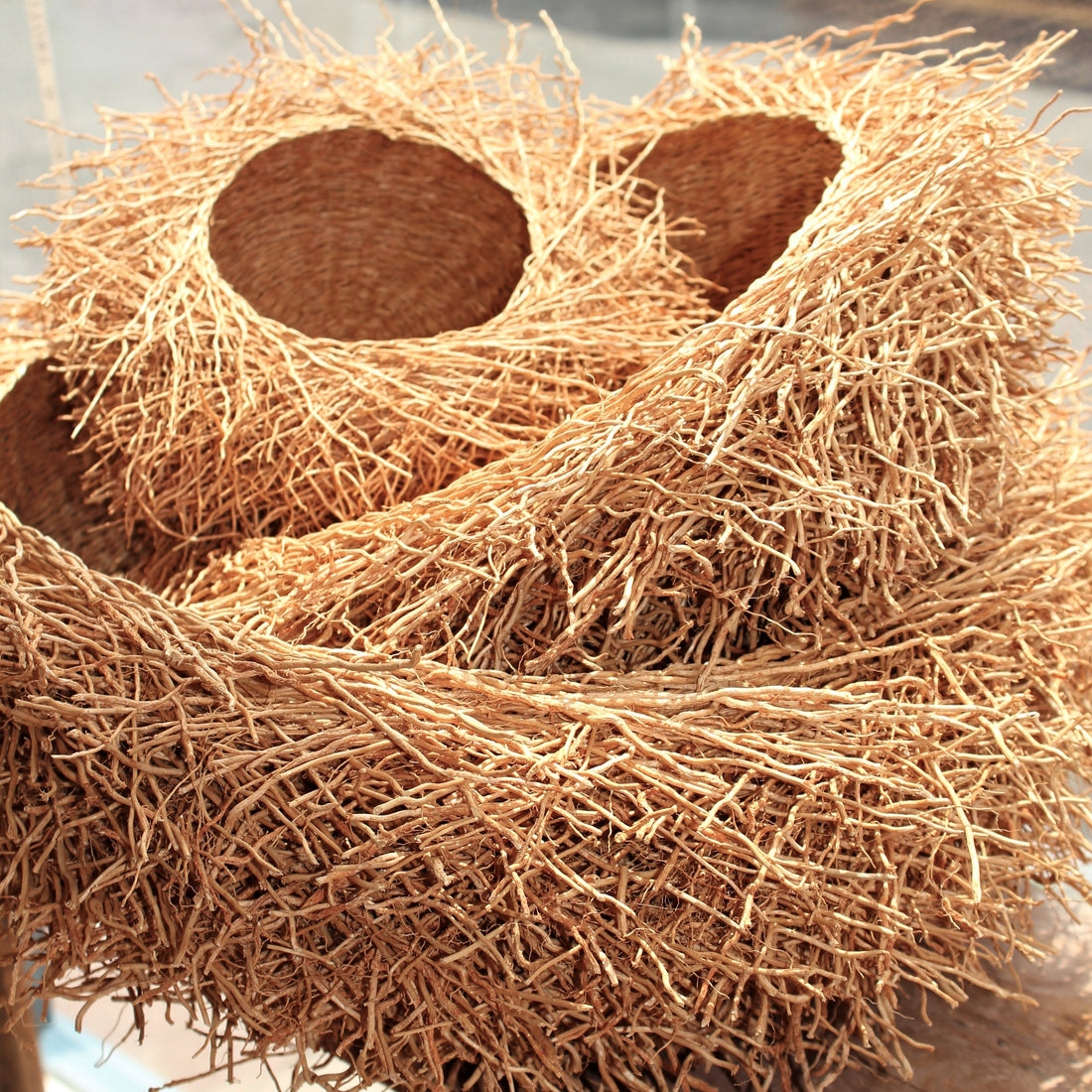You can always tell when we have had a new delivery of vetiver products as the shop is filled with a wonderful scent as the boxes are opened. We were first drawn to the baskets by their amazing sculptural form, woven as they are, from the twisted and naturally dried roots of the plant but it is their scent that makes them even more special.
Vetiver is one of the oldest plants on earth, a fast growing grass found in tropical and sub-tropical climates. Properly known as Vetiveria Zizaninoides, and from the same family as lemongrass and citronella it is also known as “khus” in India and grows in thick clumps up to 3m high with roots that are up to 7m long. It was originally introduced to Madagascar from India by the French during colonial times for the extraction of essential oils from it’s roots.

Vetiver has been used in perfumes since medieval times and, due to its sensuous and deeply calming scent it was known as the “oil of tranquillity” valued not only for its subtle woody fragrance but for its fixative qualities, with no synthetic alternative, it is still often used to stabilise other, more volatile, or delicate perfume ingredients in a blend. Today, it often features as a base note in haute couture perfumes like Chanel no 5 as it’s evaporation from the skin takes a long time; a feature perfumers call “persistence”.
The fragrance is often described as warm and dry, earthy, and woody with leather, balsamic and smoky notes. Well known vetiver based perfumes are Dior’s Miss Dior, YSL Rive Gauche, Diptyque Vetyverio and Jo Malone London Vetiver and Golden Vanilla although it is perhaps more familiar to people as a top note in men’s fragrances like Creed Original Vetiver , Guerlain’s Vetiver or Tom Ford Grey Vetiver
Indigenous peoples have long recognised vetiver for its medicinal uses as an anti-inflammatory and as a treatment to help blood circulation and aid digestion. In Chinese medicine it is used to soothe skin conditions as well as balance emotions to calm and cool the body. With anti-septic, anti-fungal and insect repellent properties it can also be used as a natural deodorant and in ancient times was used as an air conditioner. Screens would be woven out of the roots dampened and then used to cover the windows and doors to produce a cool, fresh scented atmosphere.
More recently vetiver has been seen as an important tool for dealing with soil and water erosion, a problem that is particularly intense in Madagascar caused by agricultural practices, deforestation, forest fires and of course, climate change. In fact, it has been promoted widely in sub-tropical regions as something of a wonder crop. Growing on a range of soils it is easy, non-invasive, cheap to establish and needs minimal maintenance. It is drought and fire resistant, and farmers can grow and sell it as a crop whilst using it as a soil erosion and fire barrier, particularly on hillsides or to border and protect roads and fields. It also will assist with water conservation and is known as a powerful means to treat water contaminants.

Nothing is wasted with vetiver. The grass is used by Malagasy people as roof thatch and can be converted into briquettes for cooking. It can also be used as animal feed and as ground mulch. The roots contain the essential oil so are used for its extraction and for weaving into mats and baskets.
Our baskets and bundles are hand woven by women in Antananvarino within a Fair Trade project training artisans to use local materials and secure an income for themselves and their families







